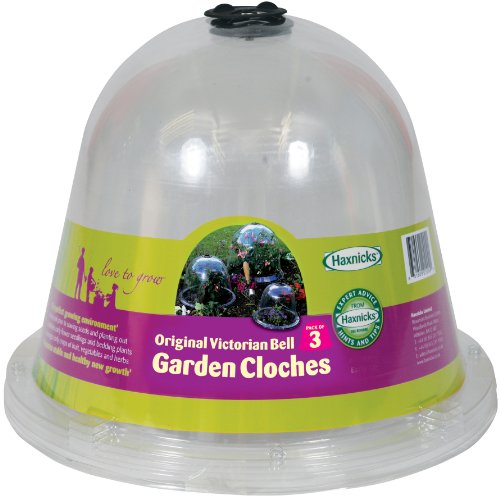This post may contain affiliate links, my full disclosure can be read here. As an Amazon Associate I earn from qualifying purchases.
How to protect your vegetable garden from frost! Extend your growing season in the spring and fall by using these simple frost protection tips.
Overall we’ve had a warm fall this year and today was a really hot day more like early August then fall.
But that’s about to change!
By tomorrow night our temperatures are going down to 3C (37F) and that means we will probably have frost. It’s pretty common for us in our zone 5 gardens to have frost early in the fall, then it will warm up for a few weeks again.

Taking some time to protect your plants from frost really helps to extend your garden’s harvest.
Since you’ve worked so hard to grow a garden this year why not take a little time to protect your plants from frost so that you can keep harvesting fresh food for weeks to come.
More Garden Tips You Will Love
- What To Plant In A Fall Vegetable Garden
- How To Harvest And Store Pumpkins
- How To Grow Spinach In The Fall
- Make Your Own Compost Sifter
- Easy DIY Birdhouse Planter Box
What Plants Need Frost Protection?
All of the warmer season plants like tomatoes, peppers, eggplant, and squashes need protection from frost and freezing.
There are many other plants that you grow in your vegetable garden that don’t mind the colder weather.
Plants You Shouldn’t Cover For Light Frosts:
- Cabbage
- Broccoli
- Brussels sprouts
- Kale
- Spinach
- Most root vegetables
Basically, anything that is in the brassica family. Vegetables in this family actually taste better after a frost because the cold weather makes them sweeter tasting.
Likewise, most root vegetables like beets, carrots, and turnips are fine with a light frost.
If you are expecting a hard frost then it’s a good idea to cover all the vegetables in your garden that you aren’t harvesting yet, make sure to use a heavy-duty frost protection.
How To Protect Your Vegetable Garden From Frost
Covering Plants
The easiest and most common way to protect plants from frost is to cover them up.
You can use many things to make quick frost covers to protect your plants. A few ideas you probably have around your home already are:
- Old Sheets
- Old Blankets
- Fabric tablecloths
- Burlap Sacks
- Towels
- Canvas Tarps
- Plastic sheeting
Just remember you don’t want to place the frost covers directly on top of the plants.
The weight of the blankets could damage the plants but also there needs to be an air space between the plant and the cover.
What your using to cover the plants can pass moisture and cold temperatures right onto the leaves if they are touching. Yup, I learned this the hard way one year.
Instead, use some wire hoops over your plants to hold the covers off them. Then secure the edges with sandbags, bricks or stones.
In a pinch, you can use sticks or even tomato cages layer on their sides as makeshift hoops to hold frost covers off your plants.
If you are only having frost for a night or two any of the suggestions above will work well for you.

But if you are expecting a week or longer of cold weather early in the season my favorite frost prevention method is to use fabric row covers.
Fabric row covers come in different weights from summer use, light frost and heavy frost protection.
What I love about using fabric row covers is they are lightweight so they don’t damage your plants.
At the same time, they allow water, air, and light to pass through. This means I don’t have to take the covers off my garden every day!
I love ways to save time and help my plants at the same time.
Cold Frames
Greenhouses Wooden Double Box Garden Cold Frame Raised Plants Bed Protection Quictent Waterproof UV protected Reinforced Mini Cloche Greenhouse 71
Quictent Waterproof UV protected Reinforced Mini Cloche Greenhouse 71
Another great way to protect your plants from frost and freezing is to use cold frames.
These are like portable greenhouses but are much shorter.
You can buy ready to use cold frames or make one your self.
To make a quick cold frame you can place straw bales around your vegetable bed and then cover the top with an old storm window or plastic.
Just remember that when the sun is shining to vent or remove the cover so your plants don’t overheat.
Cloches
Wall O Water | Tomato Teepees Protective Plant Bell, 3-Pack
Protective Plant Bell, 3-Pack
Cloches are small plastic or glass covers that you can place over top of a plant to protect it from frost.
Place them on top of your plants later in the evening when the sun is not shining directly on them anymore. Then remove them the next morning after the frost has thawed.
My favorite plastic cloches are the Wall O Waters. These are easy to fill with water and protect your plants down to 16F (-8.8 C).
Unlike glass cloches, you don’t need to remove them during the day.
They are perfect for protecting seedlings in the spring and smaller plants in the fall.
Watering Your Plants
You may be surprised to know that watering your plants can help protect them from frost damage.
Wet soil can hold more heat than dry soil and this will help to keep your plants warmer at night.
As the soil releases moisture overnight it will raise the temperatures near the plants.
You don’t want to soak the soil just give a light watering in the late afternoon before the weather starts to cool down.
Mulching
Mulch is another way to help protect plants from a light frost. When you much the soil it helps it to hold heat in, making it warmer near the plants.
Straw, wood chips, old hay, and even grass clippings make great mulches.
With just a little effort you can easily protect your garden from frost damage and extend your growing season in the spring and fall.
My favorite way to protect my garden plants from frost has always been the floating row covers, it’s affordable and lasts for a long time.
What is your favorite way to protect your garden from frost and cold weather?
Don’t forget to follow my Gardening Pinterest board for more garden tips!
Did you enjoy this post? Please pin it for later!

Connect With Homestead Acres!
Be sure to follow me on social media, so you never miss a post!
Facebook | Twitter | Pinterest | Twitter
Visit my Amazon store to find all my favorite gardening, homesteading tools, and gadgets plus all of my printed garden books and journals!
Connect With Homestead Acres!
Be sure to follow me on social media, so you never miss a post!
Facebook | Twitter | Pinterest | Twitter
Visit my Amazon store to find all my favorite gardening, homesteading tools, and gadgets plus all of my printed garden books and journals!

Kim Mills is a homeschooling mom of 6 and lives on an urban homestead in Ontario, Canada. Blogging at Homestead Acres she enjoys sharing tips to help you save money, grow and preserve your own food.




